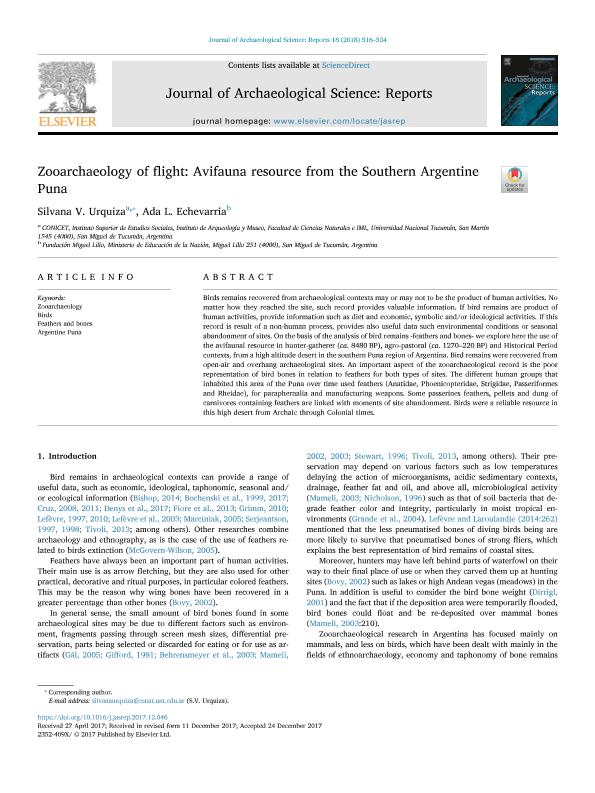Artículo
Zooarchaeology of flight: Avifauna resource from the Southern Argentine Puna
Fecha de publicación:
04/2018
Editorial:
Elsevier
Revista:
Journal of Archaeological Science: Reports
ISSN:
2352-409X
Idioma:
Inglés
Tipo de recurso:
Artículo publicado
Clasificación temática:
Resumen
Birds remains recovered from archaeological contexts may or may not to be the product of human activities. No matter how they reached the site, such record provides valuable information. If bird remains are product of human activities, provide information such as diet and economic, symbolic and/or ideological activities. If this record is result of a non-human process, provides also useful data such environmental conditions or seasonal abandonment of sites. On the basis of the analysis of bird remains -feathers and bones- we explore here the use of the avifaunal resource in hunter-gatherer (ca. 8480 BP), agro-pastoral (ca. 1270–220 BP) and Historical Period contexts, from a high altitude desert in the southern Puna region of Argentina. Bird remains were recovered from open-air and overhang archaeological sites. An important aspect of the zooarchaeological record is the poor representation of bird bones in relation to feathers for both types of sites. The different human groups that inhabited this area of the Puna over time used feathers (Anatidae, Phoenicopteridae, Strigidae, Passeriformes and Rheidae), for paraphernalia and manufacturing weapons. Some passerines feathers, pellets and dung of carnivores containing feathers are linked with moments of site abandonment. Birds were a reliable resource in this high desert from Archaic through Colonial times.
Palabras clave:
Argentine Puna
,
Birds
,
Feathers And Bones
,
Zooarchaeology
Archivos asociados
Licencia
Identificadores
Colecciones
Articulos(ISES)
Articulos de INST.SUPERIOR DE ESTUDIOS SOCIALES
Articulos de INST.SUPERIOR DE ESTUDIOS SOCIALES
Citación
Urquiza, Silvana Valeria; Echevarria, Ada Lilian; Zooarchaeology of flight: Avifauna resource from the Southern Argentine Puna; Elsevier; Journal of Archaeological Science: Reports; 18; 4-2018; 516-534
Compartir
Altmétricas




